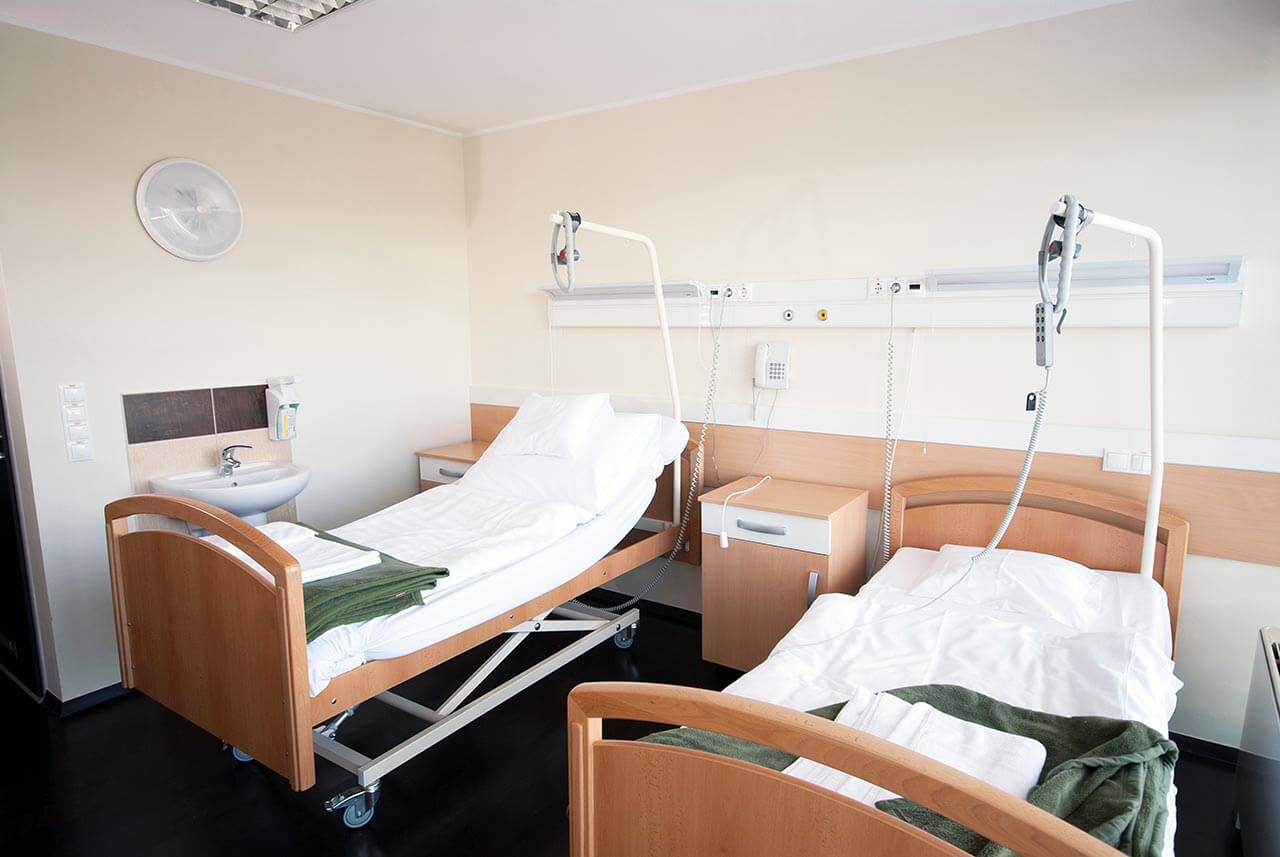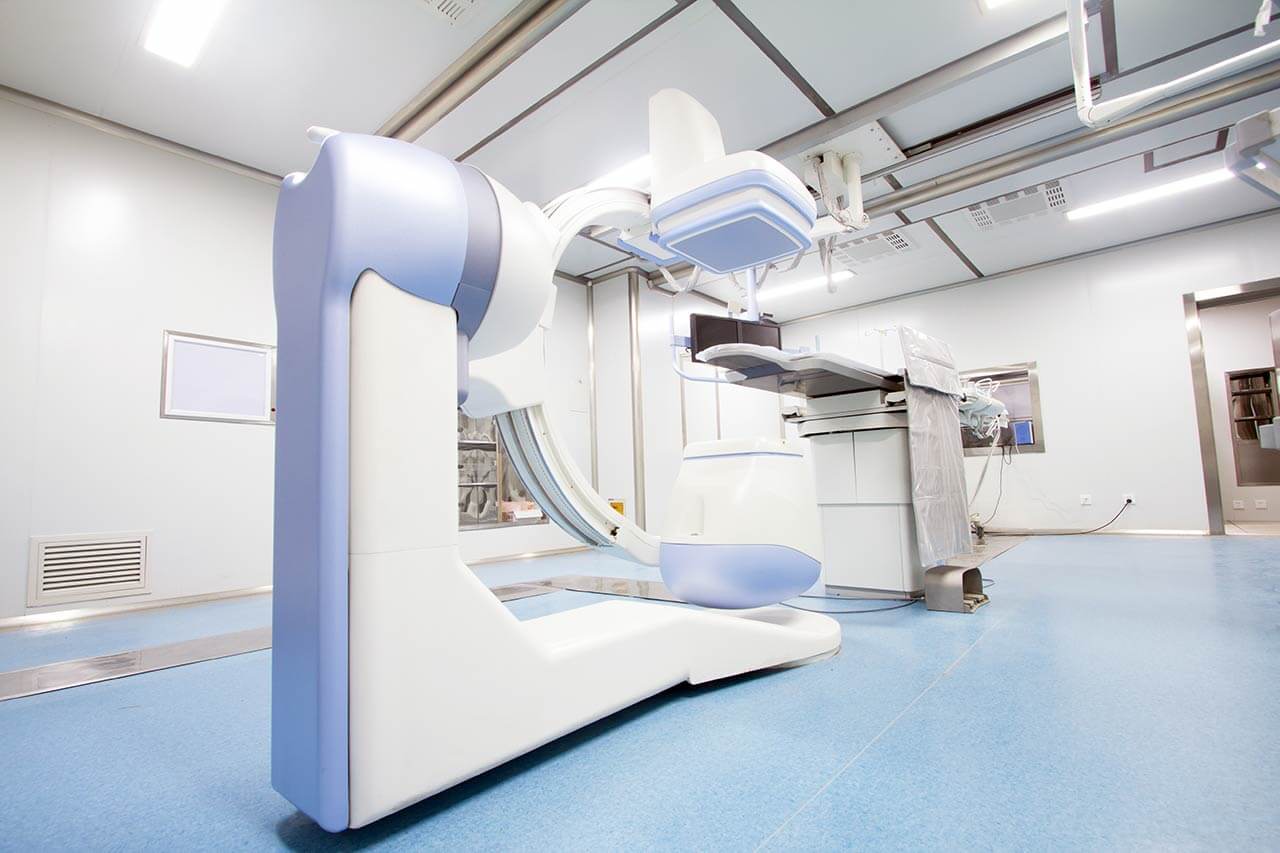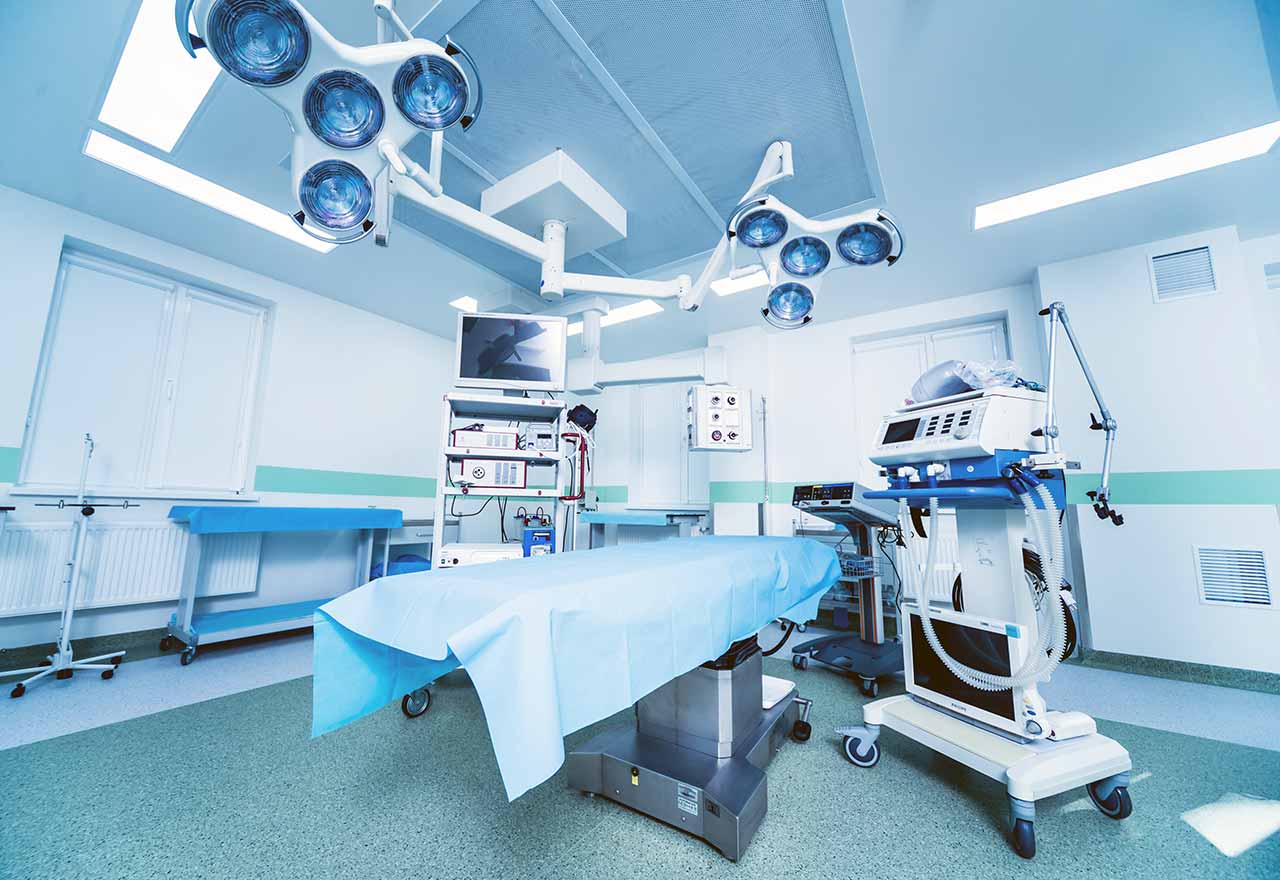
About the Department of Vascular Surgery at Hospital Oberberg Waldbrol
The Department of Vascular Surgery at the Hospital Oberberg Waldbrol offers all the possibilities of modern medicine for the diagnostics and treatment of diseases of the arteries, veins, and lymphatic vessels. The department first opened its doors to patients as an independent medical facility in 2011. The department is currently part of the certified Vascular Center Oberberg, where vascular surgeons, angiologists, and phlebologists work together. With all the necessary technical resources and advanced therapeutic methods, the department's specialists successfully treat abdominal aortic aneurysms, carotid artery stenosis, peripheral artery disease, vascular stenoses and obstructions, thrombophlebitis, deep vein thrombosis, diabetic foot syndrome, and chronic non-healing wounds on the lower limbs. More than 30 beds are available for inpatient treatment, while many diagnostic and therapeutic procedures are performed on an outpatient basis. The department's vascular surgeons have a perfect command of endovascular, open, and hybrid surgical techniques. Whenever possible, preference is given to minimally traumatic endovascular techniques or hybrid surgery. The department is headed by Dr. med. Gero Lorenz.
The department is the only medical facility in the region that offers comprehensive diagnostics and therapy for all types of vascular diseases. The department's specialists have an excellent diagnostic base for high-precision examinations. Patients undergo Doppler ultrasound, color-coded duplex ultrasonography, rheography, classical angiography, digital subtraction angiography, oscillography, phlebography, and other diagnostic examinations in the department's diagnostic rooms. Doctors from related disciplines are engaged in the diagnostic process, if necessary.
The department's vascular surgeons most often deal with the treatment of vascular stenoses and obstructions of various localizations. The most effective and sparing method for eliminating stenosis or obstruction is balloon angioplasty with subsequent stent implantation. The essence of the endovascular intervention is as follows: a catheter with an attached balloon is inserted through the femoral artery (in some cases, an approach through the radial artery may be used), which is directed to the area of vascular narrowing under imaging guidance. The balloon is placed in the required position and inflated, after which it is removed from the patient’s body. As a result of such manipulations, blood flow in the affected blood vessels is restored. In many cases, stenting complements balloon angioplasty, during which the specialists implant a stent, a miniature structure shaped like a frame, into the lumen of the blood vessel. This stage of the therapeutic manipulation serves to prevent recurrent vascular stenosis or obstruction, as the stent keeps the blood vessel open and ensures sufficient blood flow.
Rotational atherectomy is another effective method for eliminating vascular stenoses and obstructions. The endovascular intervention is also performed through a puncture in the femoral or radial artery with the use of catheter-based techniques. The department's surgeons insert a special elliptical diamond-tipped burr into the vascular lumen under X-ray guidance, which, as it rotates, breaks down atherosclerotic plaques into microparticles. Over time, these microparticles are naturally removed from the body. The method is highly effective and is often used when, based on the diagnostic results, doctors conclude that balloon angioplasty will not achieve the desired result.
The department's doctors have vast experience in the treatment of abdominal aortic aneurysms (expansion of the vessel diameter by 3 cm or more). Abdominal aortic aneurysm is a common disease and also quite insidious, as it often remains asymptomatic for a long time, causing the progressive thinning of the vascular wall. Therefore, the pathology is usually diagnosed accidentally during examinations for other complaints. The department's vascular surgeons have all modern treatments for aneurysms. These include endovascular interventions for implanting a stent-graft, a Chimney EVAR endovascular procedure, and open surgery with the implantation of a Y-shaped vascular prosthesis. With appropriate clinical indications, the department's specialists use the endovascular treatment option, while open surgery is considered only in the most complex clinical cases. It is worth noting that endovascular interventions are performed only as planned, so in cases of aneurysm rupture, doctors resort to open surgery. The main advantages of the endovascular treatment are minimal trauma rates and excellent cosmetic results (inconspicuous scars). However, it is practically impossible to remove large aneurysms using sparing surgical techniques.
The department also admits patients with various venous diseases, such as varicose veins, thrombophlebitis, deep vein thrombosis, and other pathologies. Varicose veins are the most common problem with which patients seek medical help from the department. The initial stages of the pathology are often greeted with conservative methods, for example, ointments, gels, and compression therapy. The second-line treatment includes minimally traumatic procedures, such as sclerotherapy and VenaSeal vein obliteration. If the pathology is diagnosed in the advanced stages, surgeons consider the possibility of stripping. During the intervention, the affected vein is extracted through small incisions of 2-3 mm in two places with the help of a stripper (a special probe). Due to the miniature incisions, a good cosmetic result from the intervention is ensured.
The department's clinical focuses include:
- Surgery for vascular stenoses and obstructions of various localizations
- Balloon angioplasty with subsequent stent implantation
- Rotational atherectomy
- Surgery for carotid artery stenosis
- Thromboendarterectomy with flap grafting
- Eversion carotid endarterectomy
- Surgery for abdominal aortic aneurysms
- Endovascular stent-graft implantation
- Chimney EVAR endovascular procedure
- Open surgery for the implantation of a Y-shaped vascular prosthesis
- Surgery for peripheral artery disease
- Endovascular operations (balloon dilation and stent implantation)
- Open surgery (peripheral artery bypass surgery)
- Hybrid operations (combination of open and endovascular techniques)
- Surgery for subclavian steal syndrome
- Percutaneous transluminal angioplasty with subsequent stent implantation
- Surgery for venous diseases
- Sclerotherapy, VenaSeal vein obliteration, and stripping for varicose veins
- Surgery for thrombophlebitis
- Surgery for deep vein thrombosis
- Surgery for diabetic foot syndrome
- Surgery for diabetic foot trophic ulcers
- Open/interventional revascularization
- Reconstructive plastic surgery after an amputation
- Surgery for chronic non-healing wounds on the lower limbs
- Wound debridement and skin grafting with mesh implants
- Vacuum-assisted closure (VAC therapy)
- Surgery for dialysis access formation
- Other medical services
Photo of the doctor: (c) Klinikum Oberberg GmbH




